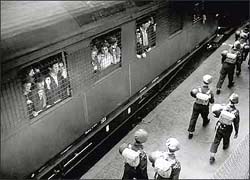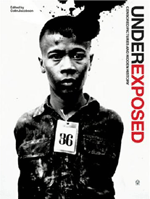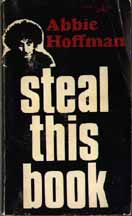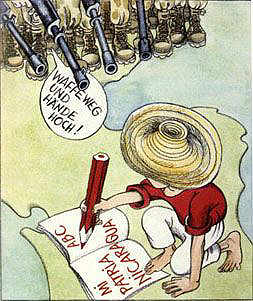Paper, Pulp, and Resistance
“Indonesia’s pulp and paper industry has rapidly expanded since the late 1980s to become one of the world’s top ten producers. But the industry has accumulated debts of more than U.S.$20 billion, and expanding demand consumes wide swathes of Sumatra’s lowland tropical forests. This land is claimed by indigenous communities, who depend on them for rice farming and rubber tapping. The loss of access to forests, together with companies, hiring from outside the province, has been devastating to local livelihoods, leading to violent conflicts.
Asia Pulp & Paper (APP) is Indonesia’s leading paper producer, and owner of one of the largest stand-alone pulp mills in the world, the Indah Kiat mill in Riau, Sumatra. The mill’s primary fiber supplier, Arara Abadi, established its pulpwood plantation in the 1980s-90s, under then President Soeharto. Arara Abadi, backed by state security forces, routinely seized land for the plantations from indigenous communities without due process and with little or no compensation.
Since the fall of Soeharto in May 1998, local residents have attempted to press their claims, but have met with unresponsive law enforcement. With no remedy for their grievances, communities have increasingly turned to vigilantism. Arara Abadi has responded with violence and arrests.
[In 2001] local villagers in Mandiangin, Betung, and Angkasa/Belam Merah... set up blockades or began logging plantation trees. Hundreds of club-wielding company militia attacked residents, seriously injuring nine and detaining sixty-three. Indonesian police, who trained the civilian militias and also were present during the attacks, were complicit....
The majority of police and military spending (70 percent) comes from off-budget business ventures, many of which are in the forestry sector. These business ties set up an economic conflict of interest in law enforcement. In addition, Arara Abadi’s security personnel have no guidelines for the use of force and are not held accountable for violations of the rights of local people.”
See Without Remedy: Human Rights Abuse and Indonesia’s Pulp and Paper Industry.
Though Human Rights Watch implicates funding by multilateral financial institutions like the World Bank and International Monetary Fund and places the paper industry in the context of foreign dept, they do not address the fact that APP’s assets (valued at US$ 17.5 billion) are largely financed by is shareholders (25%), bondholders (38%) and banks (20%). Many of the biggest investment banks and export credit agencies in the U.S., Europe, and Asia have provided loans and guaranteed this finance over the last ten years. Friends of the Earth names the names and lists UK distributors of APP Paper.
A Bug’s Life
A “union bug” is a tiny logo used to designate items that have been produced with union labor.
“Printers have been know to use a bug to designate union labor as early as October 15, 1891, when it appeared at the head of the editorial column of the Compositors (I.T.U.) Typographical Journal. The first known use of a bug in commercially-produced documents was by the [International Printing Pressmen Union of North America] in May 1893.
 The union label has at least five purposes:
The union label has at least five purposes:
- It is a protection against anti- or non-union shops that might otherwise profess union working conditions.
- It can be part of a public-relations campaign to induce customers to buy union-made products.
- It is a sign of good workmanship and quality standards.
- It is badge of union prestige to attract new members.
- It is warning against trespass by competitive unions.
Bugs usually appear discreetly at the corner of a back page or at the bottom of a title page.... The most common union bug is that of the Allied Printing Trades. It signifies that all aspects of the work, from typesetting to finishing, were performed by union labor. This bug contains several important pieces of information. The lower arc contains the geographic region, which may be a city ("New York") or a broader area ("Northern California"). Coupled with that location is a shop name or number. The number is permanently assigned when the shop is organized. A regional list of union shops, indexed by shop name and number, is available from the local Printing Trades Council. A national database is also now available on-line.”
...
So in addition to recession, years of declining union membership, and an increasingly hostile organizing environment, the union bug, proud mark of much hardship and struggle, is being written out of the history of the documents that bear it. While archivers and catalogers of printed matter note publisher, printer, city and date of printing, they almost always exclude information encoded in the union bug and even fail to mention the bug at all.
“Most catalogers have no idea what to do with them. Full cataloging of bug-bearing documents either omits mention of them at all or indicates only that which is recognizable.... Direct inquiry confirmed that ‘The Library of Congress has not sought to describe (this) level of detail... when encoding historical documents with the American Memory DTD [Document Type Definition].’...
The authoritative source on cataloging guidelines is the Anglo American Cataloging Rules (AACR). According to Michael Gorman, Dean of Libraries at C.S.U. Fresno and editor of the AACR, ‘I can safely say that the Union Bug is not mentioned in any English-language cataloguing code.’
A review of the 1988 edition provides several potential loci for specifying union bug information.... Given that the union bug is a valuable piece of cataloging data, I would like to propose that it be formally included in AACR, MARC, EAD, and other archival cataloging protocols. The default option should be that absence of information means that there is no bug. If a bug is present, however, the relevant information should have a designated place to record it.”
U.S. Racism in Pictures

“A documentary with 3,000 pictures, music, interviews and narration presented on two screens for audiences of up to 2,000... A lecture on racism, oppression, poverty and social injustice with more than 5,000 presentations in American and European Higher Education.”
...
See also 30 photos from 1937-1943 of signage enforcing racial discrimination. From the Library of Congress:
“Photographers working for the Farm Security Administration Historical Section (later transferred to the Office of War Information) were encouraged to document continuity and change in many aspects of life in America during the years the unit was in operation. They were particularly encouraged to photograph billboards and signs as one indicator of such developments. Although no documentation has been found to indicate that photographers were explicitly encouraged to photograph racial discrimination signs, the collection includes a significant number of this type of image, which is rarely found in other Prints and Photographs Division collections.”
Underexposed
 The people in the black and white photo behind the bars of the boxcar in the 1940’s German train station are not Jews off to the camps to be killed. They are indeed German Jews off to a camp, but the photo was taken after the end of war, the soldiers on the platform are British, and the passengers are survivors of Nazi concentration camps, denied entry into Palestine. Here, they are being transported from Hamburg docks to the Poppendorf detention camp.
The people in the black and white photo behind the bars of the boxcar in the 1940’s German train station are not Jews off to the camps to be killed. They are indeed German Jews off to a camp, but the photo was taken after the end of war, the soldiers on the platform are British, and the passengers are survivors of Nazi concentration camps, denied entry into Palestine. Here, they are being transported from Hamburg docks to the Poppendorf detention camp.
The photo and its story are reproduced in Underexposed. From Vision On Publishing:
“Underexposed tells the stories behind the photographs which determine our view of history, providing a reality check on alleged events from the last hundred years and documenting the struggle of the powerful to contend with rival cultural forces of media and information. Reclaimed from the trash cans of the Second World War. From the cruelty of Stalin’s Russia and fundamentalist chaos in Iran to the horrors of the Gulf war and perspectives on September 11th — even Hitler’s preening speech rehearsals come back to argue with his self-made myth. Via disgruntled starlets, ecological destruction and US nuclear tests, Underexposed gathers together some of the most ideologically dangerous photographs ever taken and releases them to haunt the increasingly manipulated, re-touched present.”
 I found the book on the front table at St. Mark’s Books, mixed with the latest compilations on cyber-typography, club flyers, erotica, and graphic novels. The juxtaposition is continued on the publisher’s Web site. Among the publisher’s list of glossy photo books of rock stars, fashion, erotica, and a celebration of the Manchester City Football Club (and its fans), Underexposed seems a bit like war porn. The design of the book is certainly less than sober, full of dramatic, oversized, full-bleed spreads and a hip sans serif typeface. Each photo is provided with some background, but the captions only allow so much space.
I found the book on the front table at St. Mark’s Books, mixed with the latest compilations on cyber-typography, club flyers, erotica, and graphic novels. The juxtaposition is continued on the publisher’s Web site. Among the publisher’s list of glossy photo books of rock stars, fashion, erotica, and a celebration of the Manchester City Football Club (and its fans), Underexposed seems a bit like war porn. The design of the book is certainly less than sober, full of dramatic, oversized, full-bleed spreads and a hip sans serif typeface. Each photo is provided with some background, but the captions only allow so much space.
The bottom line: photographs can lie. Particularly those that purport to be objective. Taken out of context, they are cropped, altered, and framed by the context at hand and by cultural assumptions. And page after page, the flouting of taboo and power starts to flatten out. Like all the speakers in the corner of Hyde Park, all ideologies become equivalent.
That said, the book does rouse a healthy dose of skepticism. It also crosses into the terrain of Barthes’s Mythologies, an examination of connections between language, imagery, ideology, and power and a wandering interrogation of “the obvious.”
From a review in The Guardian:
“In one of the most shocking images, taken from the Sudanese famine of 1984, Wendy Wallace photographed the photographers at work snapping an emaciated child who had been brought out to sit in the dirt precisely for that image.
It is a theme that recurs in Alex Webb’s pictures of the American invasion of Haiti. A line of US troops lies dramatically - heroically - on the Tarmac at Port au Prince airport aiming their weapons at an unseen enemy. Most media organisations showed this image. Webb’s version shows the reality: the only figures are half a dozen and more photographers and cameramen crouched in front of the soldiers, puncturing the dramatic image in a campaign that was to see virtually no opposition to US troops.”
See an excerpt from the forward to the book, some photos from the book, or listen to an audio interview with Colin Jacobson, former photo editor for a number of British news magazines and editor of Underexposed.
...
Also of note, The Commissar Vanishes: The Falsification of Photographs in Stalin’s Russia, an small online exhibit of doctored photos and propaganda posted by the Newseum. Shown here, Stalin with Nikolai Yezhov, commissar of water transport, before and after he was purged.
Steal This Book
“Leaflets, posters, newsletters, pamphlets and other printed matter are important to any revolution. A printing workshop is a definite need in all communities, regardless of size. It can vary from a garage with a mimeograph machine to a mammoth operation complete with printing presses and fancy photo equipment. With less than a hundred dollars and some space, you can begin this vital service. It’ll take a while before you get into printing greenbacks, phony identification papers and credit cards like the big boys, but to walk a mile you must start with one step as Gutenberg once said.”
...
“Food conspiracies, bust trusts, people’s clinics and demonstrations are all part of the new Nation, but if asked to name the most important institution in our lives, one would have to say the underground newspaper. It keeps tuned  in on what’s going on in the community and around the world. Values, myths, symbols, and all the trappings of our culture are determined to a large extent by the underground press. Each office serves as a welcome mat for strangers, a meeting place for community organizers and a rallying force to fight pig repression. There are probably over 500 regularly publishing with readerships running from a few hundred to over 500,000. Most were started in the last three years. If your scene doesn’t have a paper, you probably don’t have a scene together.”
in on what’s going on in the community and around the world. Values, myths, symbols, and all the trappings of our culture are determined to a large extent by the underground press. Each office serves as a welcome mat for strangers, a meeting place for community organizers and a rallying force to fight pig repression. There are probably over 500 regularly publishing with readerships running from a few hundred to over 500,000. Most were started in the last three years. If your scene doesn’t have a paper, you probably don’t have a scene together.”
...
“A heavier scene than even the high schools exists in No-No Land of the military. None-the-less, against incredible odds, courageous G.I.’s both here and overseas have managed to put out a number of underground newspapers. If you are a G.I. interested in starting a paper, the first thing to do is seek out a few buddies who share your views on the military and arrange a meeting, preferably off the base. Once you have your group together, getting the paper published will be no problem. Keeping your staff secret, you can have one member contact with someone from a G.I. coffee house, anti-war organization or nearby underground newspaper. This civilian contact person will be in a position to raise the bread and arrange the printing and distribution of the paper. You can write one of the national G.I. newspaper organizations listed at the end of this section if you are unable to find help locally. The paper should be printed off the base. Government equipment should be avoided.”
...
“Under FCC Low Power Transmission Regulations, it is legal to broadcast on the AM band without even obtaining a license, if you transmit with 100 milliwatts of power or less on a free band space that doesn’t interfere with a licensed station. You are further allowed up to a 12-foot antenna or the use of carrier-current transmission (regular electric wall outlets). Using this legal set-up, you can broadcast from a 2 to 20 block radius depending on how high up you can locate your antenna and the density of tall buildings in the area.”
...
Free food, housing, education, and independent media. Shoplifting, pipe bombs, medical care, draft counseling... and graphic design.
It’s all there in the hipster slang of 1970. While downloading the complete Steal This Book as one big 413 Kb HTML file, read a little about its provenance.
The title joke still makes me laugh. Steal this book about destroying capitalism. But, while some items in the book are still relevant to movement building and perhaps real social change, others seem more like cheap thrills than liberation. 30 years later, Hoffman’s catalogue of techniques of resistence reads as a vision of a life of struggle. The introduction breezes through a snapshot of the ills of America, but get your nuanced political and economic analysis elsewhere — this is just a practical guidebook. Perhaps for those without a nuanced political or economic analysis? “The purpose of part two is not to fuck the system, but destroy it.” By fighting violence and theft with violence and theft? And then what?
Found via Boing Boing.
American Concentration Camps

Blamed for an attack on America, non-white Americans and residents of foreign descent had become so hated that in February 1942 the President ordered their arrest and detention at “relocation centers” around the country. 110,000 men, women, and children were removed from their homes, rounded up at gun point, and locked up for the next three years.
From a Web site on Owens Valley History, the site of the Manzanar detention center:
“Two-thirds were first-generation American citizens. They lived in American cities, attended American schools, and thought of themselves as Americans... They were removed from their homes, schools, and businesses, and brought to Manzanar and nine other camps like it.... A few were second-generation Americans.... Neither they nor their parents had ever known any other life than their life in the United States.
Almost a third of the prisoners were Japanese citizens, resident aliens by definition of the U.S. immigration law.... All of this group had lived in the United States at least eighteen years, since American borders were closed to Japanese immigrants in 1924. All had been specifically barred from applying for American citizenship. The right to become an American citizen was not allowed to the Japanese until 1952, when quotas were introduced.”
The Library of Congress Web site features a collection of 244 photographs of Japanese-American internment at Manzanar taken by reknown landscape photographer Ansel Adams. Depicted are scenes of daily life, agricultural scenes, sports and leisure activities, and portraits of the detainees. Browse via the subject index or the thumbnail view.
From the Library page about the collection:
“In 1943, Ansel Adams photographed the Manzanar War Relocation Center at the suggestion of its director, his good friend and fellow Sierra Club member, Ralph Merritt. Adams wanted to contribute to the war effort while at the same time show the loyalty of the Japanese-Americans interned at Manzanar... In 1944, some of these images were published in Adams’ book Born Free and Equal. The book had a limited circulation, perhaps due to the political climate of war-time America. When offering the collection to the Library, Adams said in a letter, ‘All in all, I think this Manzanar Collection is an important historical document, and I trust it can be put to good use...The purpose of my work was to show how these people, suffering under a great injustice, and loss of property, businesses and professions, had overcome the sense of defeat and despair by building for themselves a vital community in an arid (but magnificent) environment.’”
The internment camps were small planned communities built with volunteer, contract, and forced labor on the site of a ghost town.
“The center was located at the former farm and orchard community of Manzanar. Founded in 1910, the town was abandoned when the city of Los Angeles purchased the land in the late 1920s for its water rights. The Los Angeles aqueduct, which carries Owens Valley water to Los Angeles, is a mile east of Manzanar.”
In addition to vital necessities of food and shelter, the camp had its own school, church, factories, hospital, and even a local paper. See this essay for details on the design and operations of the camp.
 40 years after the closing of the camps, the United States government conceded that the relocation was based on racial bias rather than on any true threat to national security. 50 years later in 1992, President Bush offered reperations and an apology.
40 years after the closing of the camps, the United States government conceded that the relocation was based on racial bias rather than on any true threat to national security. 50 years later in 1992, President Bush offered reperations and an apology.
Congress established the Manzanar National Historic Site, containing 550 acres, on March 3, 1992. It is currently administered by the National Park Service, under the U.S. Department of Interior. See the Park Service Web site.
Nearly 60 years after the war, Yoshie Hagiya, age 77, Oxnard High class of 1942, received her school’s valedictorian honors.
Posters for Workers (and the People Who Employ Them)
“Some of the statutes and regulations enforced by agencies within the [U.S.] Department of Labor require that notices be posted in the workplace. The Department provides electronic copies of the required posters. Some of the Department of Labor’s posters are available in languages other than English. They are also available in electronic form.”
More are not very beautiful and seem designed by bureaucrats, but they must be posted in a conspicuous place as a notice to employees and a warning to employers. The posters implicitly call on employees to monitor the complience of their employers, and some even provide phone numbers and contact info. They are designed in a no-nonsense institutional non-style, that speaks of authority and bureaucratic indifference.
Are you a confused employer? The Department of Labor even has an online an electronic walkthrough of the poster requirements and laws.
Many states have their own posters and requirements, too. The posters generally fall into the following areas: minimum wage and age, job safety and health, information about emergency family medical leave, worker’s compensation, and polygraph and equal opportunity protection.
None of the posters I found address your federally protected right to organize and form a union in your workplace — though South Carolina, a “right-to-work” state, describes this right in their big labor law poster.
Below are a sampling of posters produced by the states.

In addition to their statutory language version, Oklahoma provides a plain language version (shown), complete with color photos and clear subject headings.

Tennessee’s poster for employees offers a loud warning for those would forget their rights.

Child labor law == happy kids. Just like in the clip art of this Kansas poster.

Hawaii’s posted is clear and direct, with a splash of color.

Because the information on this South Carolina poster is so organized, I don’t think the poster was consciously designed to be obscure. But what employee would read such a dense poster in the kitchen?
There are also companies who market compliance, selling laminated, redesigned, all-in-one versions of the posters.
Antiimperialistisch Solidaritat

Like the international solidarity work of Cuba, the government of East Germany
“strongly advocated for anti-imperialism and declared general freedom and solidarity with numerous countries including Chile, Uruguay, Vietnam, Laos, Angola and Palestine among others up until the fall of the Berlin Wall in 1989.”
Transnational Poster Art: International Solidarity and East German Poster Art is an online exibit of over 30 posters
“all of which were designed in the former German Democratic Republic (GDR), and whose production was funded and encouraged by the East German government. The viewer will also encounter some posters produced in Nicaragua and Chile which compliment the East German ones in terms of content, and other types of artwork created by Germans as well as Latin American citizens. Our purpose is to show the GDR’s foreign policy towards developing countries during the 1970’s and 80’s, a foreign policy which the East German government strove to reinforce and legitimize through this popular art form.”
 The introductory essay proposes that in addition to this legitimation, the posters fostered an awareness of international political situations, reminded the East German population of communist movements around the world, reinforced the idea of the U.S. as a common enemy to those movements, and that the foreign policy (and its promotion) were also an effort to “one up” West Germany and to gain approval and clout from the Soviet government.
The introductory essay proposes that in addition to this legitimation, the posters fostered an awareness of international political situations, reminded the East German population of communist movements around the world, reinforced the idea of the U.S. as a common enemy to those movements, and that the foreign policy (and its promotion) were also an effort to “one up” West Germany and to gain approval and clout from the Soviet government.
The posters are organized as follows:
- History: GDR Poster Art
- GDR Poster Art and Chile
- GDR Poster Art and Nicaragua
- GDR Poster Art and other Latin American Countries
- GDR Poster Art and other Developing Nations
- Anti-USA Posters
The poster up top is by Alexander Schiel, titled “‘In our hands, God has put the destiny of a troubled humanity.’ — US President Reagan,” 1983. The poster on the right is “Untitled (Literacy),” 1984, by Barbara Henninger. The American troops are saying “Drop your weapons and put your hands up high!” to the Nicaraguan boy, learning to write, spells out “Nicaragua my mother country.”
Other East German poster art and propaganda can be found at the German Propaganda Archive, see
- Caricatures from Eulenspiegel, the GDR’s weekly humor magazine, 1953
- Posters from the 30th anniversary of the GDR in 1979
- Eulenspiegel cartoons, 1985-1989
- Labor related propaganda from workplace Wandzeitungen — bulletin boards or “wall newspapers,” 1988 and 1989
Center for the Study of Political Graphics
“There has never been a movement for social change without the arts — theatre poetry, music posters — being central to that movement. Political posters in particular are powerful living reminders of struggles worldwide for peace and justice. Communication, exhortation, persuasion, instruction, celebration warning: graphic art broadcasts its humanity through bold messages and striking iconography.
The Center for the Study of Political Graphics (CSPG) is a nonprofit, tax-exempt educational archive that collects, preserves, documents, and exhibits domestic and international posters relating to historical and contemporary movements for peace and social justice....
The archive includes more than 35,000 posters produced in a staggering array of visual styles and printing media, dating from the Russian Revolution to the present. University, museum, and public collections of this material are rare, and because those that do exist are seldom accessible to the public, CSPG’s commitment to continually exhibiting this rich visual and social history is so critical....
The Center was recently awarded a major grant from the Getty Grant Program to implenient a state-of-the-art electronic cataloging system designed to make the collection even more accessible.”
I do hope “more accessible” includes publishing more of their collection online. On the CPSG site, the exhibit Presidential Rogues Gallery: Satrical Posters 1960 - Present features a mere 11 images. The Sixties Project has published another of the CPSG’s exhibits online. Decade of Protest: Political Posters from the United States, Cuba and Viet Nam 1965-1975 features 67 posters that were shown at the Track 16 Gallery in Santa Monica in 1996.
Though the center limits its collection to posters from peace and justice movements, a thorough study of propaganda technique would also include material from a right-wing point of view. Movements for peace and justice would also do well not to ignore grassroots conservative movements, their history and political graphics.
The image above is copyright 1971 by the Committee to Help Unsell the War, “a coalition of over 30 advertising agencies.”
Power and Geography
“Michael Miller is a geographer with over a decade of providing geographical services to organizations involved in monitoring global human rights.
These services include map research, cartographic production for publications, web sites and presentations, satellite imagery analysis, and geographic information systems.
His maps have appeared in media throughout North America and Europe, and on the web. Clients have included: Human Rights Watch, Amnesty International, the US Holocaust Memorial Museum, Global Witness, and Public Affairs, Rutledge, Yale University and Westview Presses.“
Some sample maps at his Web site, rightsmaps.com:






